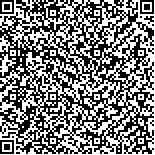张伟,李瑞青,谷玉静,等.局部振动与体外冲击波治疗对脑卒中后偏瘫患者小腿三头肌痉挛和步行能力的影响[J].中华物理医学与康复杂志,2022,44(4):318-323
扫码阅读全文

|
| 局部振动与体外冲击波治疗对脑卒中后偏瘫患者小腿三头肌痉挛和步行能力的影响 |
|
| |
| DOI:10.3760/cma.j.issn.0254-1424.2022.04.006 |
| 中文关键词: 局部振动 体外冲击波 脑卒中 痉挛 步行能力 |
| 英文关键词: Local vibration therapy Extracorporeal shock wave therapy Stroke spasticity walking ability |
| 基金项目:河南省重点研发与科技攻关推广专项(212102310360);国家中医临床研究基地科研专项课题(2019JDZX2008);河南省中医药学科领军人才项目(豫卫中医函2021-8) |
|
| 摘要点击次数: 4845 |
| 全文下载次数: 5973 |
| 中文摘要: |
| 目的 比较局部振动和体外冲击波治疗对脑卒中后偏瘫患者小腿三头肌痉挛和步行能力的影响。 方法 将69例符合纳入标准的脑卒中偏瘫患者按随机数字表法分为对照组、振动组和ESWT组,对照组每周一至周六进行60 min的常规康复治疗(主要以Bobath技术、运动再学习技术等为主),每次治疗时间60 min,6次/周,共治疗4周;振动组和ESWT组每周一、三、五按照对照组内容进行常规康复治疗,每周二、四、六在常规康复治疗50 min的基础上,振动组加入10 min局部振动治疗(每周3次,共治疗4周),ESWT组则加入10 min 的ESWT(每周3次,共治疗4周)。分别于康复训练前(治疗前)和训练4周后(治疗后),采用综合痉挛量表(CSS)、被动关节活动范围(PROM)、踝关节跖屈角度、10 m最大步行速度(10 m MWS)、步频、步幅六种方法对3组患者的肌痉挛程度和步行能力进行评定。 结果 ①治疗后,对照组、振动组和ESWT组患者的CSS[(9.87±2.07)、(8.65±1.77)和(7.39±1.97)分]、PROM[(54.17±5.12)°、(57.57±5.79)°和(61.43±6.24)°]、踝跖屈角度[(35.70±5.73)、(31.13±4.33)和(27.52±4.15)°]明显优于组内治疗前[CSS(11.39±2.76)、(11.61±2.44)和(11.43±2.72)分;PROM(50.83±5.47)°、(51.04±6.28)°和(50.78±5.99)°;踝跖屈角度(39.71±6.40)°、(38.30±6.72)°和(39.17±7.40)°],且差异有统计学意义(P<0.05);对照组、振动组和ESWT组的CSS、PROM、踝关节跖屈三个指标均逐级改善,组间差异有统计学意义(P<0.05)。②治疗后,对照组、振动组和ESWT组患者的10 m MWS[(22.13±6.03)、(27.22±7.70)和(29.09±7.33)m/min]、步频[(21.65±6.68)、(26.35±7.00)和(27.74±7.01)步/min]、步幅[(22.39±6.21)、(29.09±8.03)和(31.04±8.01)cm]均明显优于组内治疗前[10m MWS(2.13±1.42)、(2.22±1.44)和(2.30±1.61)m/min;步频(12.13±4.71)、(13.09±4.58)和(11.70±4.00)步/min;步幅(9.57±3.94)、(10.26±4.08)和(10.61±3.56)cm],且差异有统计学意义(P<0.05);治疗后,振动组和ESWT组的10 m MWS、步频、步幅均明显优于对照组(P<0.05),但振动组和ESWT组治疗后的各项指标组间比较,差异无统计学意义(P>0.05)。 结论 局部振动和体外冲击波治疗均可改善脑卒中后偏瘫患者小腿三头肌的痉挛和步行能力,且体外冲击波在改善痉挛方面优于局部振动,但二者在提高患者步行能力方面无明显差异。 |
| 英文摘要: |
| Objective To compare the effect of local vibration and extracorporeal shock wave therapy (ESWT) on triceps spasticity and the walking ability of hemiplegic stroke survivors. Methods Sixty-nine stroke survivors with hemiplegia were randomly divided into a control group, a vibration group and an ESWT group. The control group received 60 minutes of conventional Bobath rehabilitation treatment and motor relearning from Monday to Saturday for 4 weeks. For the vibration and ESWT groups, 10 minutes of that traditional therapy were replaced by either local vibration or extracorporeal shock wave treatment every Tuesday, Wednesday and Saturday. Before and after the treatment, the three groups were evaluated using the Comprehensive Spasticity Scale (CSS) and in terms of passive joint range of motion (PROM), ankle plantar flexion angle, 10m maximum walking speed, stride frequency, and stride length. Results After the intervention the average CSS, PROM, and ankle plantar flexion angle were significantly better for all three groups than before the treatment. At that point the ESWT group′s averages were significantly better than those of the vibration group, and the vibration group′s averages were significantly superior to those of the control group. Walking speed, stride frequency and stride length had also improved significantly in all three groups, with those in the vibration and ESWT groups significantly outperforming the control group. There was no significant difference between the vibration and ESWT groups in terms of walking ability. Conclusions Both local vibration and extracorporeal shock wave therapy improve triceps spasticity and the walking ability of hemiplegic stroke survivors. Shock waves are more effective for improving spasticity, but there is no significant difference between the therapies in terms of improving walking ability. |
|
查看全文
查看/发表评论 下载PDF阅读器 |
| 关闭 |